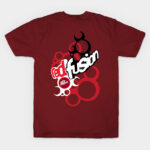Sugar’s Fried Pies

Some of my fondest childhood memories revolve around the daily meals my momma prepared for our family.
Momma (or "Sugar" as everyone called her) was an Oklahoma farm girl and a terrific homemaker and fantastic cook who always seemed to enjoy maintaining a fastidiously clean house and caring for my father, younger sister, and me. This included preparing our favorite treats, usually on a weekly basis. For me this meant her coconut layer cake with crushed pineapple between the layers and creamy white icing, her Thanksgiving sweet potato pies (which for years I thought were pumpkin), and probably my all-time favorite, homemade apricot fried pies.
 I was about eight or nine years old when I first became interested in how Sugar went about making these delectable hand-held treats, as this was about the time in my life that I had the growing desire to learn to cook. She would start about mid-morning making the filling--dried apricots, sugar, a touch of cinnamon, and water, simmered until the fruit was tender. She then added a lump of butter, mashed the mixture by hand with a potato masher into a sort of lumpy puree and set it aside to cool while she made the crusts.
I was about eight or nine years old when I first became interested in how Sugar went about making these delectable hand-held treats, as this was about the time in my life that I had the growing desire to learn to cook. She would start about mid-morning making the filling--dried apricots, sugar, a touch of cinnamon, and water, simmered until the fruit was tender. She then added a lump of butter, mashed the mixture by hand with a potato masher into a sort of lumpy puree and set it aside to cool while she made the crusts.
 Early on Sugar's fried pie crust was made from a biscuit-style dough, which as I think back was a bit ironic since she very seldom made biscuits. She would roll out the dough into a large rectangle about an eighth of an inch thick, and then, using a tea saucer as her pattern, cut it into circles about six inches in diameter. Gathering up all of the scrap pieces of dough, she reformed it, rerolled it, and cut more disks, continuing the process until every bit of dough was used.
Early on Sugar's fried pie crust was made from a biscuit-style dough, which as I think back was a bit ironic since she very seldom made biscuits. She would roll out the dough into a large rectangle about an eighth of an inch thick, and then, using a tea saucer as her pattern, cut it into circles about six inches in diameter. Gathering up all of the scrap pieces of dough, she reformed it, rerolled it, and cut more disks, continuing the process until every bit of dough was used.
 Later with the advent of canned biscuits, and being the progressive cook she tried to be, Sugar just couldn't pass up the convenience of popping open one of those cans and rolling each glob of dough into its own circle. But with that exception, the ritual remained the same, filling half of each circle with the cooled apricot filling prepared earlier. She then folded over the other dough half, carefully sealing each pie by crimping them with the tines of a moistened fork, and frying them in a large cast iron skillet of Crisco.
Later with the advent of canned biscuits, and being the progressive cook she tried to be, Sugar just couldn't pass up the convenience of popping open one of those cans and rolling each glob of dough into its own circle. But with that exception, the ritual remained the same, filling half of each circle with the cooled apricot filling prepared earlier. She then folded over the other dough half, carefully sealing each pie by crimping them with the tines of a moistened fork, and frying them in a large cast iron skillet of Crisco.
OMG, a snack! Eating one of those treats made me feel as though I had died and gone to heaven.
For those of you who may not be familiar with these little pockets of deliciousness, let me provide a little fried pie history, albeit a rather sketchy one. Research provides very little as to the when, where, and by whom fried pies were first created. Some claim they descended from New Hampshire's crab lanterns, a fried apple pastry whose name is derived, according to the Encyclopedia of American Food and Drink, from "crab apple" and "lantern," because of the "ventilating slashes that expose the fruit filling." And some believe them to simply be a southern version of the turnover, born out of the leftover pie crust from making a traditional pie. In truth, both these and other speculations as to the pastries origin probably have some merit.
 The fact is, various cultures from around the world have made "hand pies" for centuries. Spain and Portugal have had their empanada, since at least the 1500s, the Indians their meat-filled samosa, the Italians, their cheese filled calzones, the English their savory pasties, and Poland,
The fact is, various cultures from around the world have made "hand pies" for centuries. Spain and Portugal have had their empanada, since at least the 1500s, the Indians their meat-filled samosa, the Italians, their cheese filled calzones, the English their savory pasties, and Poland,  their meat and vegetable pierogi, just to name a few of the more prominent of these portable meals and treats. History also shows that while these are most commonly of a savory nature, they can actually be filled with almost anything including fruits, berries, and jams.
their meat and vegetable pierogi, just to name a few of the more prominent of these portable meals and treats. History also shows that while these are most commonly of a savory nature, they can actually be filled with almost anything including fruits, berries, and jams.
So while we may not be able to pinpoint the exact origin of the fried pie, we can be certain they are an American South tradition with generations of passed down recipes. And although apple and peach are the most common, I can assure you that other popular flavors including cherry, lemon, chocolate, coconut, blueberry, and of course apricot are equally delicious.
 Fried pies are available at travel stops, convenience stores, BBQ joints, and some fast food restaurants across the southern states from Texas and Oklahoma to the Carolinas. But make sure that what you're getting is a real fried pie and not one of the commercially branded baked pies, because they are definitely not the same. Better yet, try making your own from Sugar's recipe which I've copied into the GrubAmericana recipe index. I know she'd be honored.
Fried pies are available at travel stops, convenience stores, BBQ joints, and some fast food restaurants across the southern states from Texas and Oklahoma to the Carolinas. But make sure that what you're getting is a real fried pie and not one of the commercially branded baked pies, because they are definitely not the same. Better yet, try making your own from Sugar's recipe which I've copied into the GrubAmericana recipe index. I know she'd be honored.
Make Em: Sugar's Apricot Fried Pies
Try Em: Apple Valley Orchard, Cleveland, Tennessee, Mamaw's Fried Pies, Whitehouse, Texas, Original Fried Pie Shops, Oklahoma, Texas & Arkansas


